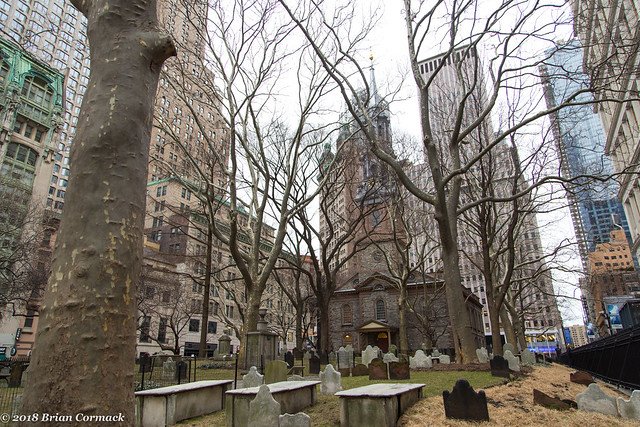
And a similar view, taken when I last visited here in 2006. A blizzard had just dumped a bunch of snow overnight.
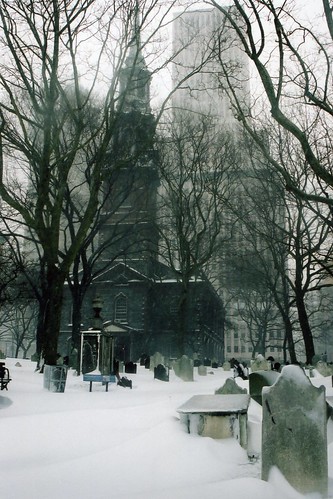
During the Revolutionary War, the church survived the Great Fire of 1776 because people formed a bucket brigade to protect the building. Later on George Washington, along with members of Congress, attended a church service here after his first inauguration in 1789. This was the church that Washington would attend during the two years that New York served as the U.S. capital.
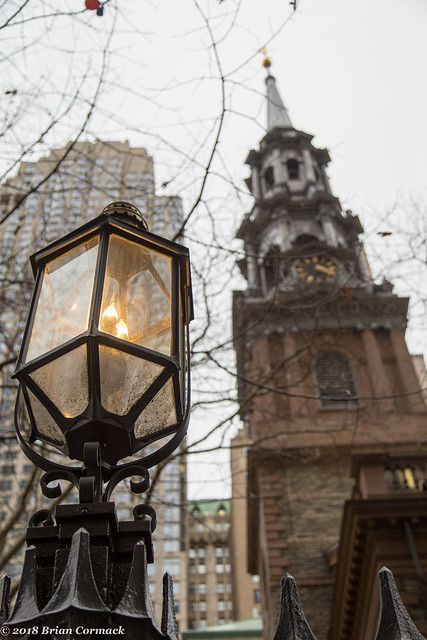

Although the church sits directly across the street from the World Trade Center, it amazingly received no structural damage during the September 11 attacks (the only damage was to the organ, which had accumulated a lot of smoke and dirt). A large sycamore tree that sat in the graveyard had been knocked over, and many believe that the tree's branches had shielded the graveyard and the church building behind it from the wall of dust and debris that fell when the towers collapsed.
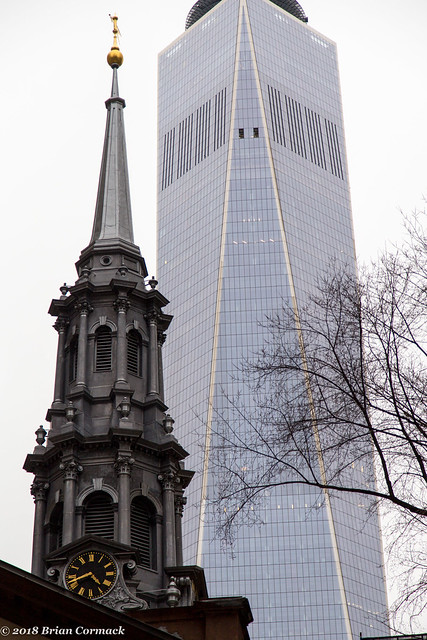
I hurried across the street and walked over to the Woolworth Building, which was built between 1910 and 1912. When the 60 story building was completed, it was the tallest building in the world. It held that distinction until 1930.
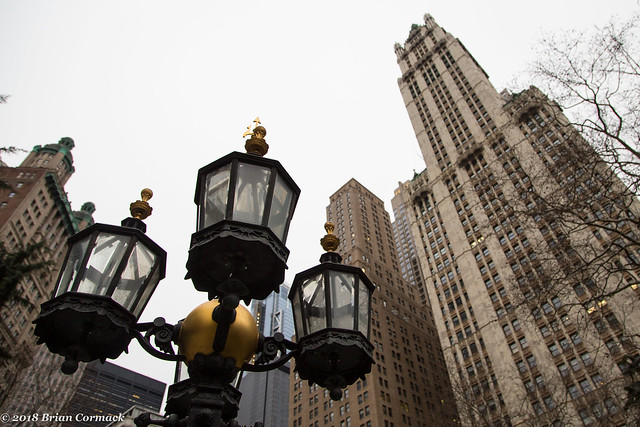
We started walking south, toward the tip of the island. We passed by this narrow street, which curved off and away behind some buildings. It would turn out that the curve in the street actually dates back to the old days when the Dutch controlled the city. The road curved alongside a small brook, which still flows but is underground now.

Just down the road is The Red Cube, which as the name suggests is a steel cube painted bright red. The sculpture by Isamu Noguchi was placed here in 1968.
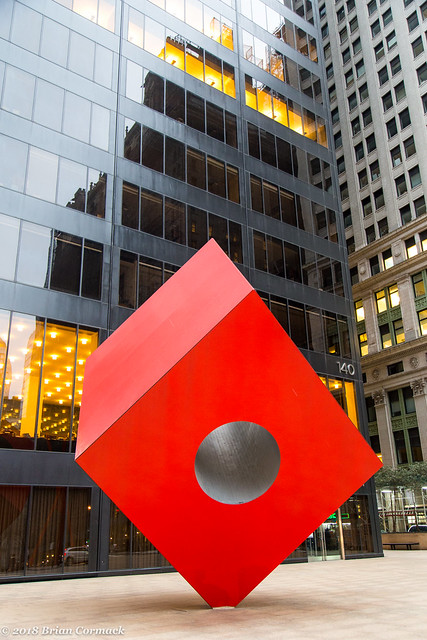
Further down is another historic old church, Trinty Church.
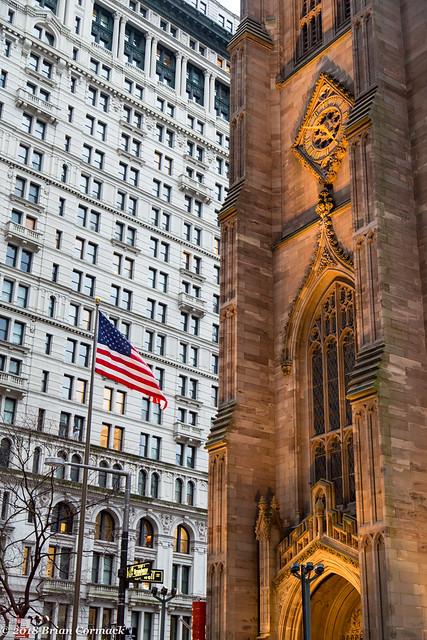
Trinity Church was completed in 1846, and is the third church to be built on this site. The first Trinity Church was destroyed by the Great Fire in 1776, and the second was damaged by strong storms. When the third and current Trinity was completed, it was the tallest building in the country (a title it held until 1869, when a taller church was built in Chicago).
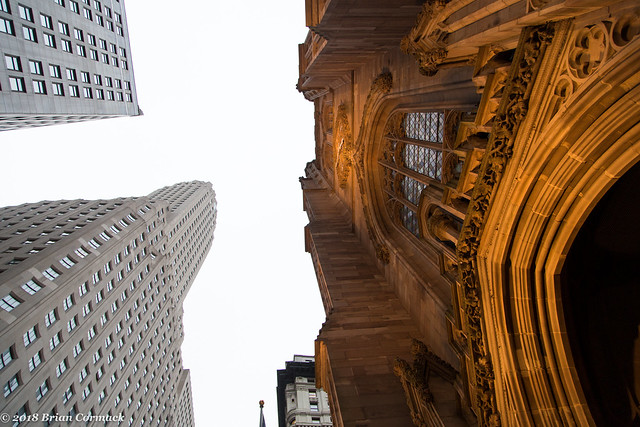
And a view of the inside of the church, which had a mix of tourists taking pictures and then people sitting solemnly in the pews.

The Trinity Church Cemetery is the final resting place for several notable people, including Alexander Hamilton. It also includes several people who signed the Declaration of Independence or who served on the Continental Congress. Here's a shot of the back of the church, taken in 2006 during the big blizzard.
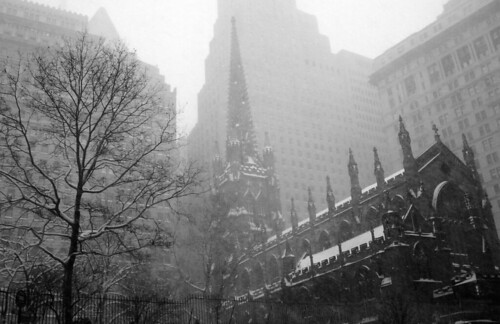
And also a guy trying to clear the sidewalk:
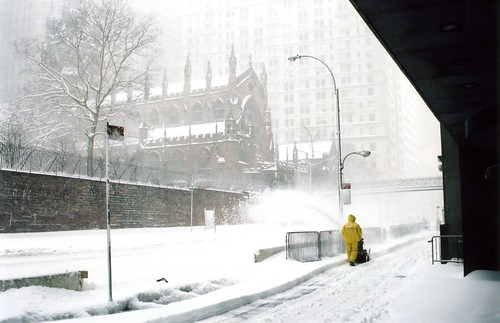
It actually started snowing on us when we were there last month, but it wasn't nearly that bad. A few snowflakes started falling while we were walking around the church.
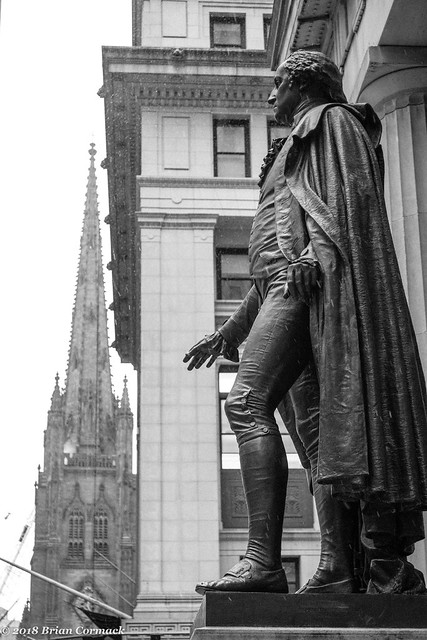
The statue here is of George Washington, and it stands at Federal Hall and marks the spot where Washington was sworn in as the first president in 1789. The building also served as the first capital building for the United States, and is the spot where the first Congress met. It was also in this spot where the Bill of Rights was ratified. In 1790, the capital was moved to Philadelphia, and Federal Hall reverted back to its original purpose as the City Hall for New York City. But when a new City Hall was built in 1812, the old Federal Hall was torn down. The current building here was built to be a US Custom's House, and is now a museum.
The George Washington statue and Federal Hall both sit along Wall Street, where they overlook the New York Stock Exchange. Wall Street is surprisingly very narrow, thank to the colonial era street plan. Wall Street got its name because in the 1600s, this was the edge of the city and there was a wall here to protect the city from attack.
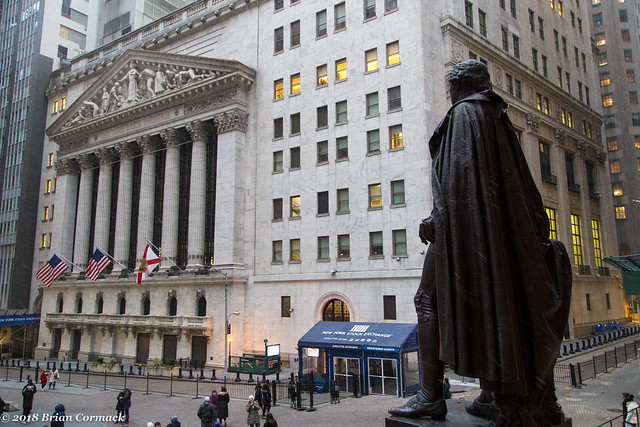
We didn't linger too much longer here, since the snow was starting to stickon the concrete. We headed back to the hotel, and got dinner at a nearby hotel where people were drinking and watching the Olympics. While walking back, I got this shot of the snow and low clouds around the spire of the Chrysler Building.
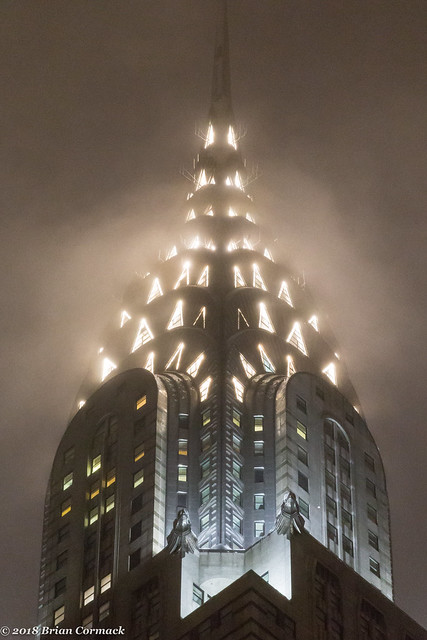
But after all that, the snow didn't really accumulate all that much in Manhattan (the suburbs got most of it). Which was nice, since it didn't really get in the way of our sightseeing. I'll conclude the posts about the trip next time, with some photos from a visit to Brooklyn.

No comments:
Post a Comment